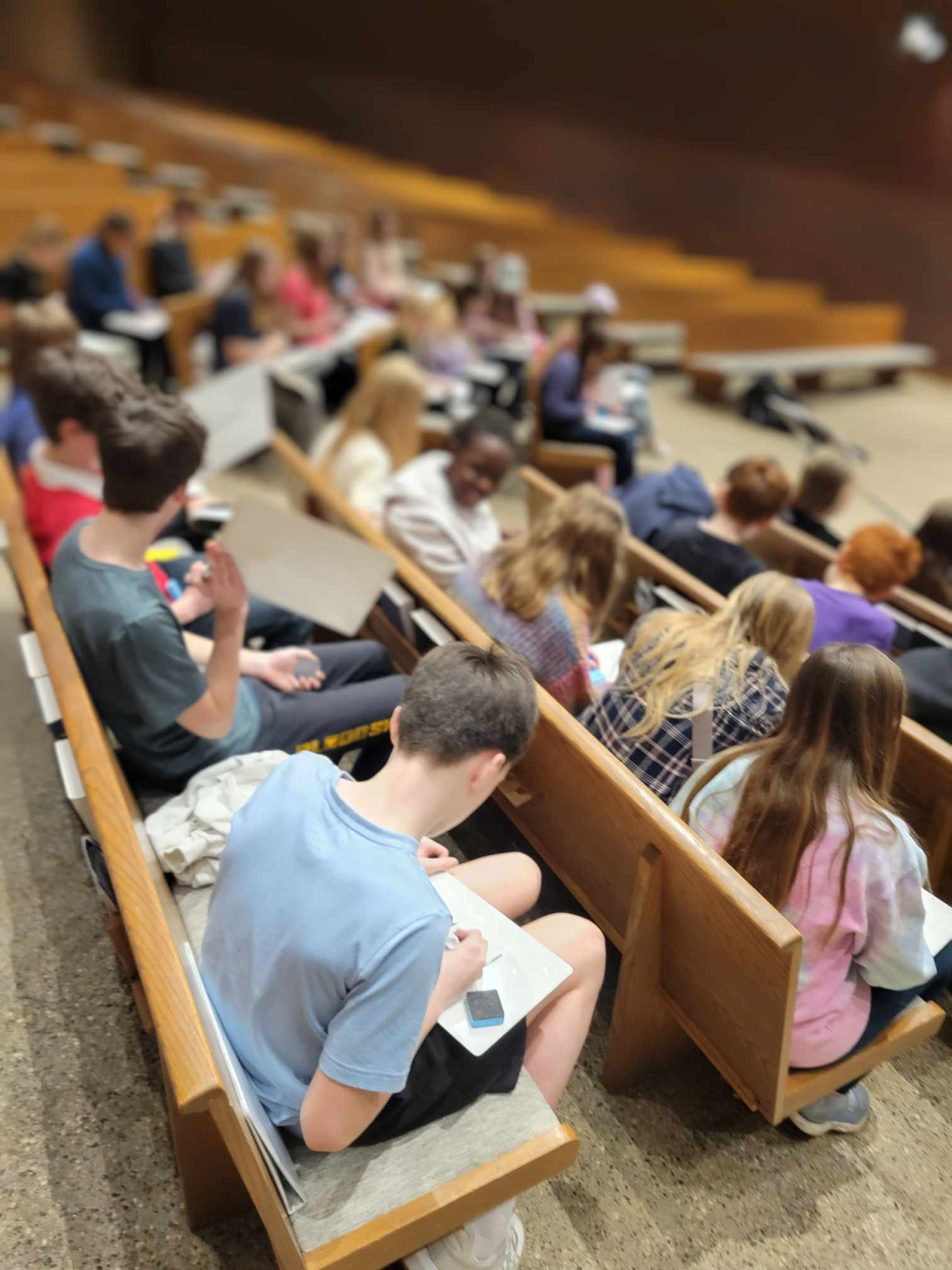
Rotating Turns: A Balanced Approach
1. Plan Your Activities Well
- Solos During Echo Songs or Tonal Patterns: Encourage students to sing back a short echo for a warm-up, call and response or echo song, or tonal pattern (if you use Conversational Solfege). In this way, you can truly have every student sing a solo (one line of the echo song) even in large classes and it takes less than 3 minutes!
- Instrumental Rotations: Utilize an instrument for a beat-keeping activity that holds attention (a loud one you don't use often is good for this because you only take out one at a time!). Each student takes a turn playing that instrument to the steady beat while the class speaks or sings a rhyme or simple song to the beat that student set the tempo with. You get to assess that student's steady beat! And each student eventually gets a turn with the special instrument. Pro tip: write down the student's assessment score (referencing a rubric if needed) to check off that they got a turn.
2. Divide and Conquer
- Session 1: Begin with every student doing the echo or beat keeping on their lap together. Ensure that they can confidently do it as a group.
- Session 2: Begin with confident students/students you know will be a good model of what you are wanting to accomplish if they are new at this. Take requests of who wants to go next or follow a predescribed pattern like "go around the circle."
- Session 3-4: Complete with the remaining students, ensuring everyone has had a chance to participate.
Keeping Track: The Importance of Documentation
1. Use a Turn Tracker
2. Assess and Reflect
Building Connections: The Power of Individual Attention
1. Personalized Feedback
2. Foster a Supportive Environment
Transform Your Life & Business with Martha Krejci's "Big Think Revolution": A Music Teacher's Review

Overview of "Big Think Revolution"
Why Regular Revisits Are Crucial
- Refocus on my goals and adjust my strategies
- Identify new opportunities for growth in my music teaching business
- Improve my time management skills, balancing homeschooling and entrepreneurship
- Stay motivated and inspired, especially during challenging times
How "Big Think Revolution" Leveled Up My Business
Conclusion
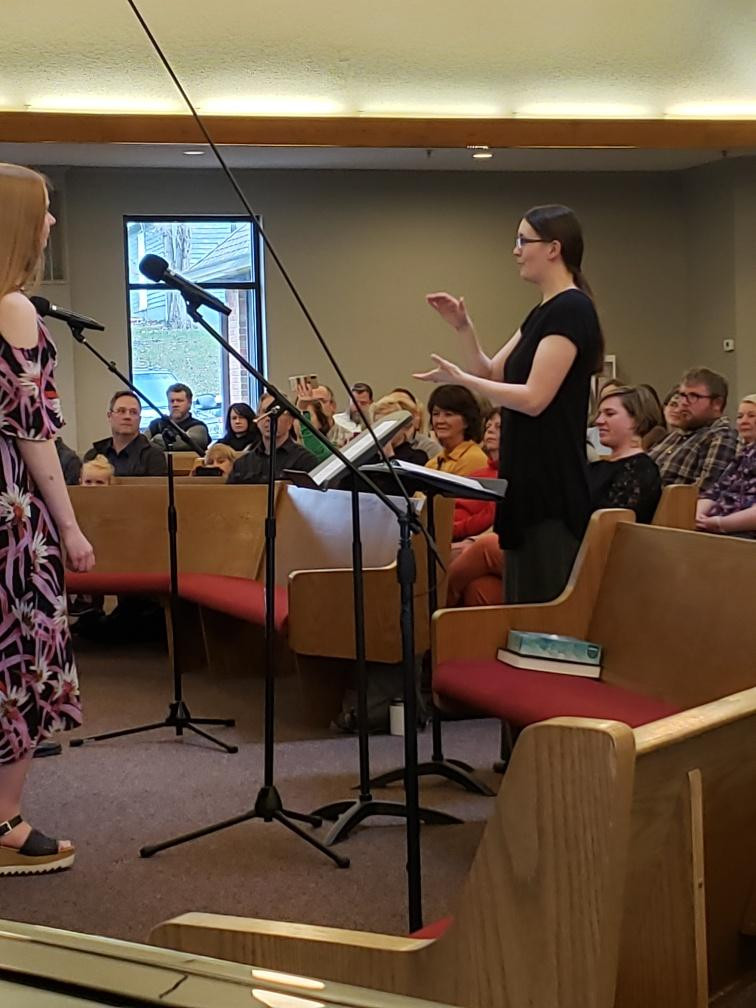
1. Recognize and Acknowledge Burnout
- Constant fatigue and lack of energy
- Decreased motivation and job satisfaction
- Increased irritability with students or colleagues
- Difficulty concentrating or being creative in lessons
- Physical symptoms like headaches or insomnia
2. Prioritize Self-Care and Work-Life Balance
- Establish clear boundaries between work and personal life
- Prioritize sleep and maintain a healthy diet
- Exercise regularly to reduce stress
- Engage in activities you enjoy outside of work
- Practice mindfulness or meditation to manage stress
- Make a list of all your responsibilities
- Categorize tasks into "Must-Do," "Delegate," and "May-Do"
- Focus on high-impact activities that directly benefit your program
- Delegate tasks when possible to parents or students or colleagues to lighten your load
- Consider eliminating or postponing low-priority items
3. Seek Support and Build a Community
- Join professional organizations for music educators
- Participate in online forums or social media groups for music teachers
- Attend conferences or workshops to network and gain new ideas & reignite passion
4. Explore Flexible Teaching Options
Private Lessons
- Set up a home studio or teach online
- Choose your own hours and student load
- Focus on one-on-one instruction in your preferred instruments or areas
Community Music Programs
- Lead a community choir or instrumental group
- Work with motivated adult learners
- Organize performances and events on a more relaxed schedule
Homeschool Music Instruction
- Offer music classes or lessons to homeschool groups
- Create a flexible schedule that works for you and your students
- Tailor curriculum to individual needs and interests
Online Music Education
- Create and sell educational resources
- Offer virtual workshops or masterclasses
- Develop a YouTube channel or podcast focused on music education
- Start by taking on a few freelance projects while still teaching
- Build a portfolio of your work and skills
- Hire a coach who is knowledgeable, successful at doing this transition in the same way you would like to do it, and has a system
- Network with potential clients and other freelance music educators
- Gradually reduce your teaching hours as your freelance work grows, if possible
- Develop business skills necessary for successful freelancing, such as marketing and financial management. Check out HBR for a great, lifetime access & updates business course!

1. JW Pepper
2. Sheet Music Plus
3. Musicnotes
4. Choral Public Domain Library (CPDL)
5. Hal Leonard
6. Oxford University Press
7. Boosey & Hawkes
8. Carl Fischer Music
9. Edition Peters
10. Independent Individual Composers' Websites

- Establish Clear Boundaries: One of the first steps in managing your time effectively is to establish clear boundaries between your work and family life. Set designated work hours for your music teaching and office hours, and communicate these hours to your students and family members. Similarly, carve out dedicated family time where work-related distractions are minimized. By delineating boundaries, you create space for both professional and personal commitments without letting them overlap excessively.
- Prioritize Tasks: Prioritization is key when balancing multiple responsibilities. Identify the most important tasks for both your music freelance teaching and family responsibilities, and tackle them accordingly. Time block to get those one-time or weekly tasks done. Consider using productivity techniques such as Eisenhower's Urgent/Important Principle to manage your time efficiently. By focusing on high-priority tasks first, you can make significant progress in both areas of your life without feeling overwhelmed.
- Embrace Flexibility: Flexibility is essential when navigating the unpredictable nature of freelance work and family life. Recognize that plans may need to be adjusted at times, and be willing to adapt accordingly. Utilize tools such as scheduling apps or digital calendars to keep track of appointments, deadlines, and family events. Additionally, communicate openly with both your students and family members about any changes or adjustments to your schedule. By embracing flexibility, you can navigate unforeseen challenges with greater ease and minimize stress.
- Delegate and Outsource: Don't hesitate to delegate tasks or outsource certain responsibilities to others when necessary. Whether it's hiring a virtual assistant to handle administrative tasks related to your teaching business or enlisting family members to help with household chores, delegating can free up valuable time and mental energy. Remember that you don't have to do everything yourself, and seeking support from others can lighten your workload and reduce feelings of overwhelm.
- Practice Self-Care: Amidst the hustle and bustle of balancing work and family life, don't forget to prioritize self-care. Carve out time for activities that recharge you mentally, physically, and emotionally. Whether it's taking a walk, practicing mindfulness, or indulging in a hobby, self-care is essential for maintaining balance and preventing burnout. Remember that by taking care of yourself, you'll be better equipped to fulfill your commitments to both your music freelance teaching and your family.

- Enhanced Focus: By allocating dedicated blocks of time for tasks like lesson planning, teaching, and administrative work, you can minimize distractions and maintain focus on the task at hand. Less distraction means more done in less time!
- Improved Productivity: Time blocking allows you to prioritize important tasks and allocate sufficient time to complete them effectively, resulting in increased productivity and efficiency. This feels good!
- Better Work-Life Balance: By scheduling specific blocks of time for work-related tasks and personal activities, you can create a more balanced schedule that allows for adequate time for rest, relaxation, and family commitments. I get so much done in dedicated 15-30 minute blocks of time!
- Reduced Stress: With a structured schedule in place, you can alleviate the stress and anxiety that often comes from feeling overwhelmed by a long list of tasks and responsibilities. The flexibility of this approach allows you not to work too long or too much as well.
- Identify Your Priorities: Start by identifying the most important tasks and activities in your day-to-day life as a music teacher. This may include lesson planning, teaching sessions, administrative work, personal practice time, and leisure activities.
- Allocate Time Blocks: Divide your day into blocks of time, with each block dedicated to a specific task or activity. Be realistic about the time needed for each task, and don't forget to include buffer time for unexpected interruptions or transitions between activities. Make sure you dedicate the time blocks where you are most alert and awake and inspired for the more challenging, brain-heavy tasks!
- Stick to Your Schedule: Once you've established your time blocks, commit to sticking to your schedule as much as possible. Avoid the temptation to multitask or deviate from your plan, and instead focus on completing each task within its designated time frame. Set a timer and turn your phone to airplane mode for minimal distractions!
- Review and Adjust: Periodically review your time blocking schedule to assess its effectiveness and make any necessary adjustments. Be flexible and willing to adapt your schedule as needed to accommodate changes in workload or priorities or family obligations.
- Use Tools and Resources: Utilize tools such as digital calendars, scheduling apps, or traditional planners to help you organize and visualize your time blocking schedule. Experiment with different methods until you find the approach that works best for you. I use Google Calendar and the tasks feature to organize my time effectively.
Time blocking can be a valuable tool for music teachers seeking to manage their time more effectively and increase their productivity. By allocating dedicated blocks of time for different tasks and activities and projects, you can enhance focus, productivity, and work-life balance. Whether you're scheduling teaching sessions, lesson planning, or personal practice time, incorporating time blocking into your routine can help you make the most of your time and achieve your goals as a music educator without feeling burnt out.
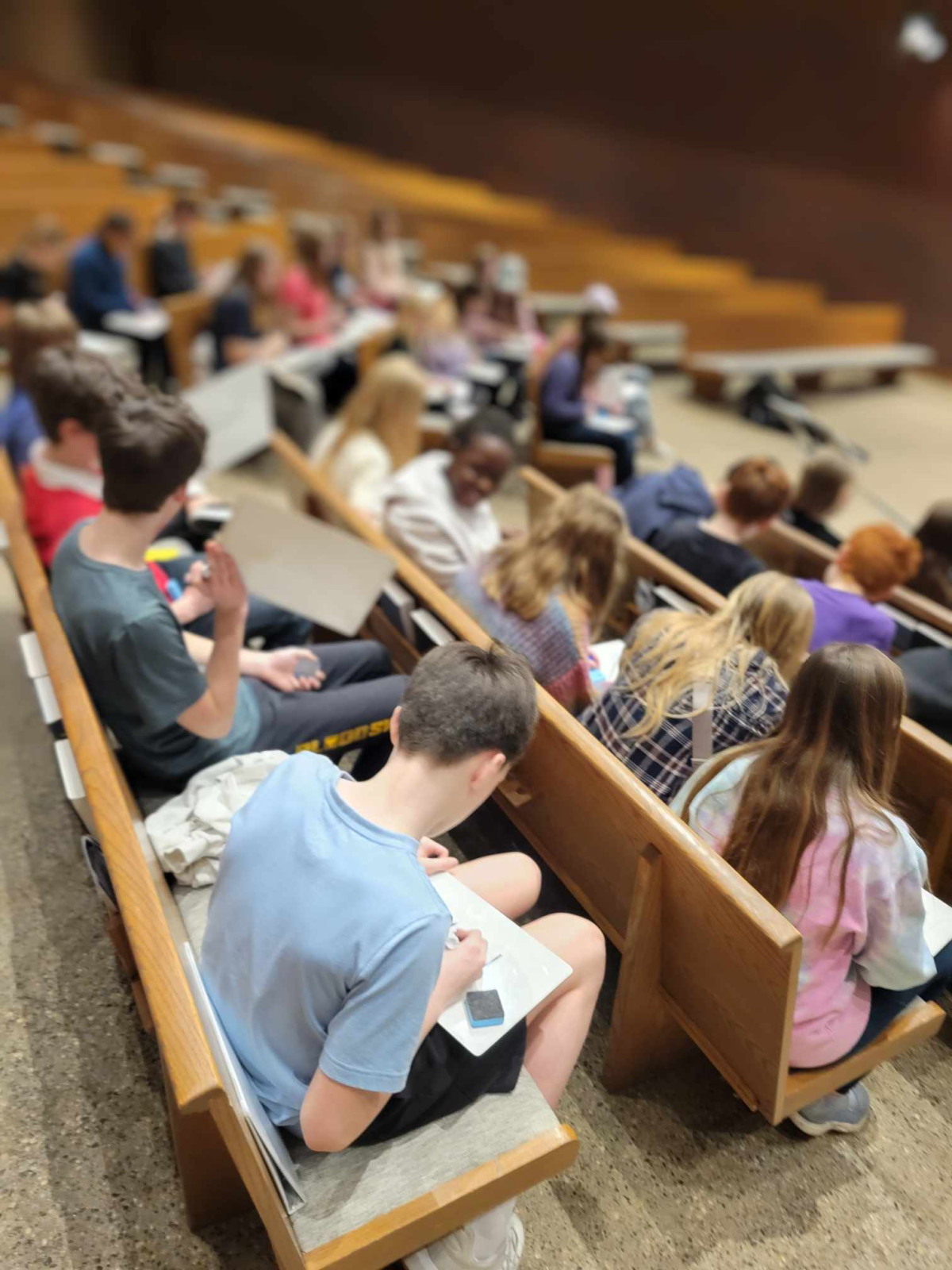

- Set Clear Goals: Begin by defining your musical objectives and the milestones you aim to achieve. Whether it's mastering a challenging technique, learning new repertoire or a new instrument, or honing your improvisational skills, clarity in your goals will guide your efforts and help you stay focused amidst the busy-ness.
- Establish Boundaries: While teaching and family commitments come first, it's essential to delineate boundaries to safeguard time for personal musical pursuits so that we don't become musically stagnant. Communicate your needs to your students and loved ones, setting realistic expectations and carving out dedicated time for practice or time with an ensemble.
- Create a Flexible Schedule: Acknowledge that different seasons may afford varying amounts of time for personal musical endeavors. Design a flexible schedule that adapts to the demands of teaching and family life, allocating resources accordingly. During busier periods, focus on maintaining consistency in practice habits, while in quieter seasons, seize the opportunity to delve deeper!
- Practice with Purpose: Maximize the efficiency of your practice sessions by prioritizing quality over quantity. Identify specific areas for improvement and tailor your practice routine accordingly. Embrace focused repetition, targeted exercises, and use your goals to establish priorities that make the most of your available time.
- Embrace the Power of Reflection: Use downtime between teaching engagements and family responsibilities to reflect on your musical skills. Evaluate your progress, identify areas of growth, and strategize ways to overcome challenges. Cultivate a mindset of continuous improvement, seeking opportunities for learning and development in every season.
- Seek Support and Accountability: Surround yourself with a supportive network of fellow musicians, mentors, and loved ones who understand and respect your commitments. Lean on them for encouragement, advice, and accountability as you navigate the complexities of balancing teaching, family life, and personal musical growth.

Do you struggle with TMJ pain? Or do you love someone who does? How does it take a toll on you emotionally?
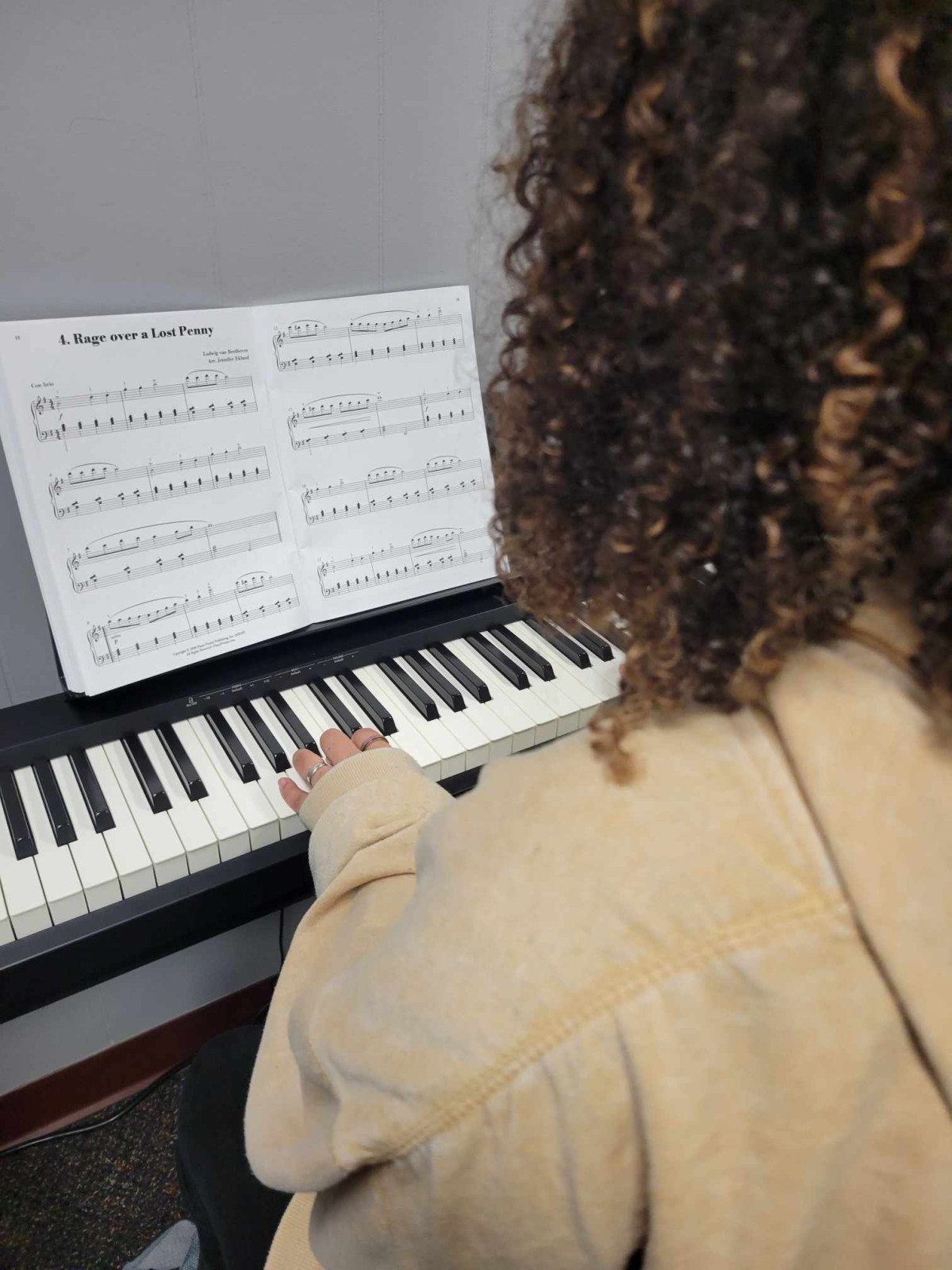
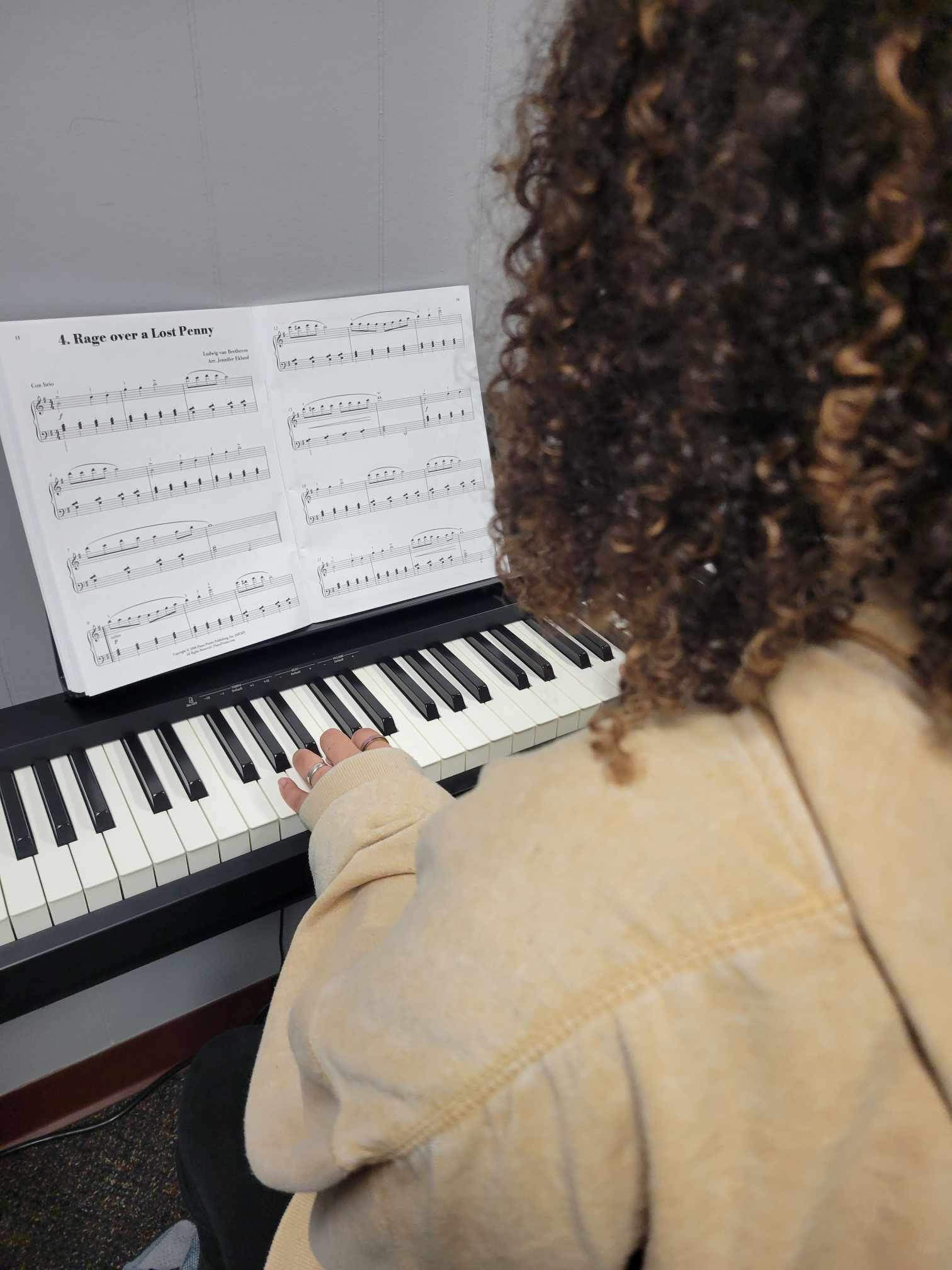
Experience and Qualifications
Market Research
Lesson Format and Duration
Overheads and Expenses












